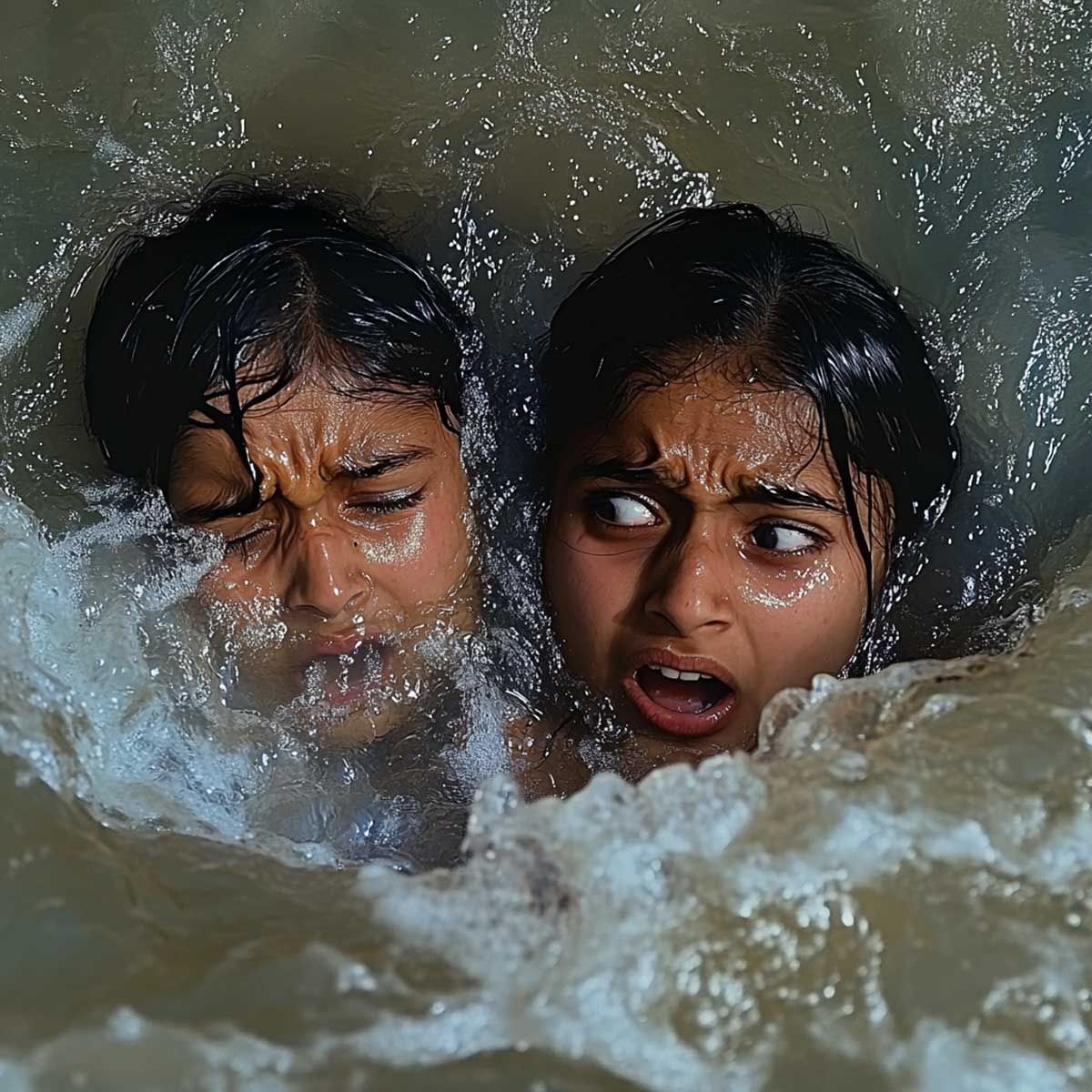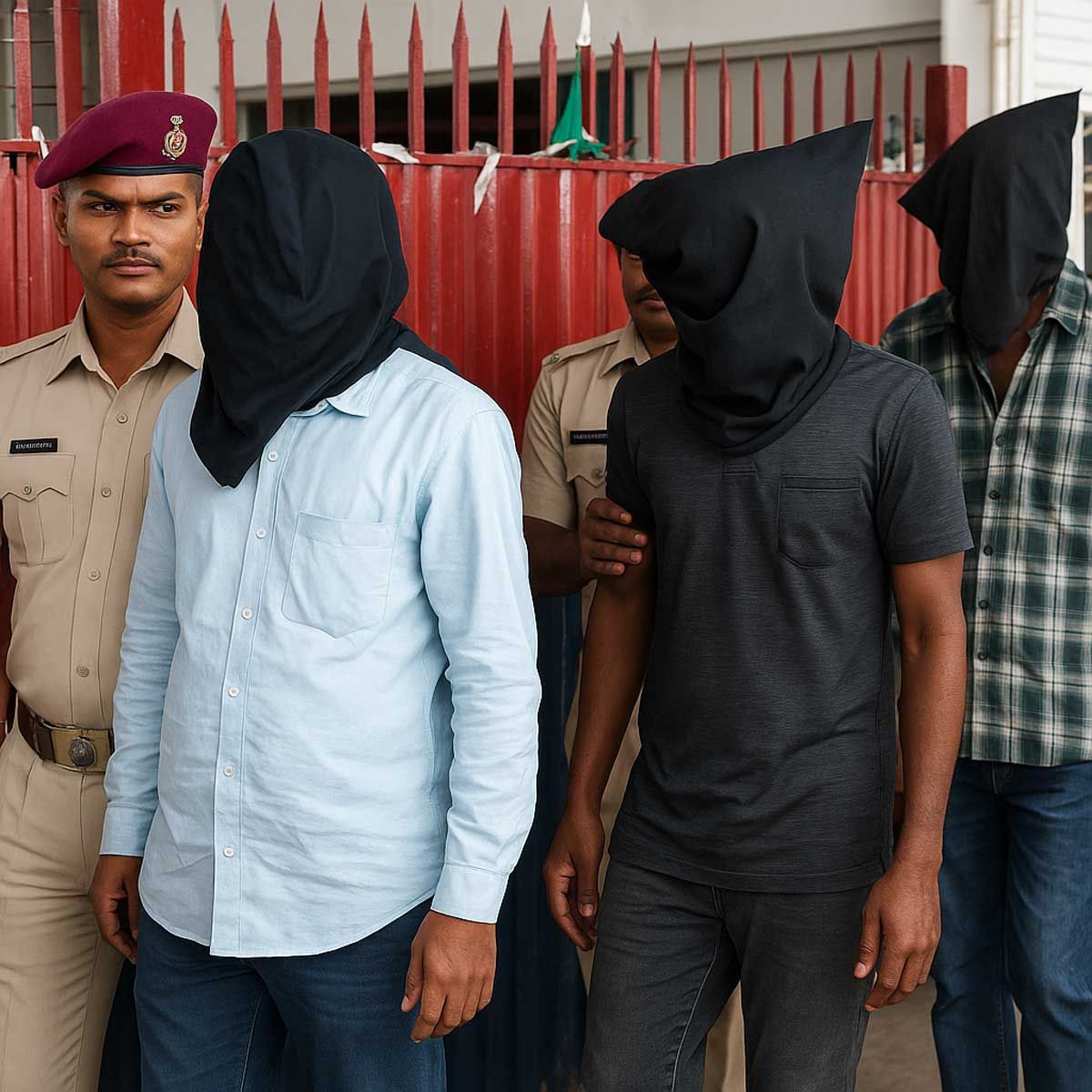More Coverage
Twitter Coverage
Satyaagrah
Written on
Satyaagrah
Written on
Satyaagrah
Written on
Satyaagrah
Written on
Satyaagrah
Written on
JOIN SATYAAGRAH SOCIAL MEDIA
"Neglect will drive a noble mind to depart for another land": Brilliant mind - Dr Subhash Mukhopadhyay who created India's first and world's second test tube baby 'Durga' in 1978 with the help of some general equipment and refrigerator was punished for it

He not only discovered the first invitro fertilization technique of India, under him the first test tube baby of India Durga was born in 1978. But Dr Subhash Mukhopadhyay of Kolkata never got his due recognition. On the contrary his feat was ridiculed at by his own colleagues, he was ostracized and finally out of frustration he committed suicide in 1981 after failing to get recognition. He could not handle constant criticism and the outright harassment he was subjected to.
|
Many decades later, the world recognized him to be not just India’s but one of the pioneers of invitro technique in the world. For all of us who have seen Tapan Sinha’s Ek Doctor Ki Maut, the 1990 award-winning film are acquainted with the sad fate of a man who if born in any other nation would have been treated like a hero.The film depicted the ostracism, bureaucratic negligence, reprimand and insult of a doctor and his research, instead of due recognition. However, this movie was loosely based on the life of Subhash Mukhopadhyay. This time however, director Kamaleshwar Mukherjee is coming up with a full blown biopic on the untold and incredible tale of this doctor.
Dr Subhash Mukhopadhyay did something only very few people do in this world - he created history. Dr Mukhopadhyay became the first physician in India(and just the second in the world) to perform the procedure to create the test tube baby.
Mukhopahyay, along with a cryobiologist and gynecologist had been working on a method of in-vitro fertilization for some time. The method would be successfully used on a patient with damaged fallopian tubes. And on 3rd October 1978, the birth of the world’s second test tube baby 'Durga' would be announced in Calcutta.
This announcement lagged by just 67 days from the birth of the first test-tube baby in England. But unlike his British counterparts, Mukherjee used cryopreservation of the human embryo- the favored method these days.
Surely, it’s a feat that merits recognitions of the highest order? Unfortunately, that’s not what happened in the doctor’s case. In fact, he faced severe social ostracisation and insults which eventually led to him committing suicide in 1981. It was only in 1986 that the country recognized him for his achievement.
And that recognition came about thanks to Prof. T.C Anand Kumar-who was considered as the person behind India’s first test tube baby. But after reviewing the personal notes of Dr Mukhopadhyay, the professor gave up that title and credited it to Mukhopadhyay. The professor even went ahead and set up a research institute in reproductive biology in the memory of Dr. Mukhopadhyay.
In the year 2002, the Indian Council of Medical Research (ICMR) recognised his work for the first time. He went to Edinburgh University in the UK for a PhD in reproductive endocrinology after studying at the National Medical College and Hospital. After his return, he started his research in ovulation and spermatogenesis. Within a year, he announced the birth of the world's second test-tube baby with a team comprising Sunit Mukherji, a cryobiologist, and Saroj Kanti Bhattacharya, a gynaecologist.
Dr Mukherjee was born at Hazaribagh in Jharkhand. It came only 67 days after the British biologist Robert Edwards had announced the birth of the first test-tube baby in England.
But unlike Edwards, Dr Mukherjee's method of cryopreservation to preserve the human embryo is currently the preferred technique of medically assisted reproduction worldwide
|
The govt. committee set up to ‘verify’ the doctor’s claims
The government set up a committee to verify the doctor’s claims. But the committee denounced the doctor’s achievements. The doctor was even denied leave so that he could create a detailed report of his results, also he was denied the opportunity to attend a meeting in Japan where his work was to be discussed. Further humiliation was on the cards as he was transferred to the Institute of Ophtalmology as professor of electrophysiology. Many consider this insult as the final straw which sent the doctor spiraling down to suicide.
It was on the 18th of November, 1978 that the Government of West Bengal appointed an ‘expert committee’ under the medical association to decide the doctor’s fate.
Some of the main ‘issues’ that the government apparently found with the doctor were the foillowing:
• He claimed to be the architect of a human test tube baby.
• The doctor gave the report to the media before he was cleared off by the government bureaucrats.
• He did this near-miraculous feat using a few general apparatus and a refrigerator in his small flat. This he made possible when many couldn’t do the same with expensive resources.
• But perhaps the most important issue of all was that he refused to bow down before the government bureaucracy.
The unfairness of the committee
Now, the committee that the government created was comprised of a physiologist, gynecologist and a neurophysiologist. The committee was presided over by a radiophysicist. The curious thing was the absence of anyone in the committee with a knowledge about modern reproductive technology.
Those who questioned the doctor were not technically equipped to do so since they didn’t have a good grasp on the medical procedure. But this was the committee that was appointed to mete out justice- and their final verdict was that all of the doctor’s claims were bogus.
But the fact was that the doctor had started working on pharmacological methods to induce ovulation and spermatogenesis at an early stage in his career-first on animals and later on humans. He had worked on the luteotropic effects of DHEA and testosterone in both rats as well as humans. The doctor had also created bioassays and biochemical methods that demonstrate the presence of something similar to HCG in the non-pregnant human endometrium. He even speculated on its possible role in the development of the fetus.
Further, the doctor’s investigations into the causes of the acyclicity of the menstural cycle in arnenorrhoric women led to significant insights about polyeystic ovaries. Another credit to the doctor is that he was one of the first to connect emotional stress to polycystic disease.
|
The key difference between the world’s first and second test tube baby procedures
It was on the 25th of July 1978 that the world’s first human test tube baby was born in England’s Oldham General Hospital. The masterminds behind this achievement were Robert Edward and Patrick Steptoe. In the duo’s procedure, ovum was collected by using laparoscope. They would observe the development of the ovum for long periods of time and later, collect it through a tiny incision. The ovum thus collected would then be fertilized with sperm on a small disc. Once an embryo is formed, the scientist would place the same in the womb.
However, Dr Mukhopadhyay collected the ovum with the aid of a vaginal operation instead of laparoscope. Using a hormone he was able to increase the number of ovum collected following which the embryo would be developed. Eventually he would place the embryo in the womb. The upshot of the latter method was that the probability of pregnancy was higher.
Dr Subhash Mukhopadhyay was born in Calcutta and is now “officially” one of the brightest Indians ever lived. But the sad fact remains that the doctor didn’t live long enough to see his achievement being recognized. But countless are those born in the country because of him.
Kanupriya aka Durga, India’s 1st test tube baby is 43
India’s first test tube baby, Kanupriya Agarwal aka Durga is a happy 43- year-old person today. Born in Pune on October 3, 1978, she represents both the success and advancement of In Vitro Fertilisation (IVF), a technique which has brought hope to millions of couples.
Interestingly, she is the world’s second test tube baby born just 70 days after Louise Joy Brown first created history being delivered on July 25 in England by Dr Robert Edwards and Dr Patrick Steptoe. Dr Edwards went on to win the Nobel Prize in Medicine and Physiology in 2010.
The IVF therapy is recognised as one of the ‘milestones of modern medicine’ by the Nobel Committee and a remarkable medical breakthrough of the 20th century. Around eight million babies have been born since 1978 through different assisted reproduction technologies, including IVF. India has been one of the countries to extensively achieve progress in this field too.
What is IVF, Test Tube babies
In Vitro Fertilisation (IVF) is a procedure in which the mature eggs are collected from the ovum of a woman and fertilised outside the body with a partner or donor’s sperm. The zygote thus created is implanted into the uterus and serves as the embryo. The test tube baby is a misnomer but a popular name for the procedure (from experiment) which is carried out in a Petri dish outside the body.
The success rates at present for the IVF technique is close to 30-35 percent. However, experts advise that the procedure should be undertaken at registered and responsible practitioners. The reason being the proliferation of clinics offering this procedure across India and the lack of established regulations and unrealistic claims.
The ICMR has set up a National Registry of ART (Assisted Reproductive Technology) Clinics and Banks to establish a database of facilities a few years ago. A Draft Assisted Reproductive Technology (Regulation) Bill of 2017, which aimed to regulate and supervise ART Clinics to prevent misuse and ensure safe and ethical practises has been updated, approved by the Union Cabinet and referred to a Parliamentary Select Committee in October 2020.
The Union government has also introduced two more bills in the parliament titled the Surrogacy Regulation Bill 2020, and the approval of the Medical Termination of Pregnancy Amendment Bill 2020. These legislative measures are important path steps to protect women’s reproductive rights.
It is important that these Bills be passed and a strict regulation put in place. In addition to higher costs, the mental trauma that a couple, especially the woman can undergo in India after IVF is very high, caution experts. According to some estimates, there are 400-450 IVF registered clinics in India (3-4 times more that are yet to be registered) that even treat those coming from abroad due to the comparatively lower costs and, in some cases, seeking Indian donor eggs and surrogates.
Even in the developed countries, including the UK, where it was pioneered, the success rates vary with age of the women. It ranges from 35 percent among the younger to 20 percent in just over 40 years of women, according to information. In some countries, the procedure has been liberalised to allow same sex couples and single mothers to opt for the technique.
References:
 Support Us
Support Us
Satyagraha was born from the heart of our land, with an undying aim to unveil the true essence of Bharat. It seeks to illuminate the hidden tales of our valiant freedom fighters and the rich chronicles that haven't yet sung their complete melody in the mainstream.
While platforms like NDTV and 'The Wire' effortlessly garner funds under the banner of safeguarding democracy, we at Satyagraha walk a different path. Our strength and resonance come from you. In this journey to weave a stronger Bharat, every little contribution amplifies our voice. Let's come together, contribute as you can, and champion the true spirit of our nation.
 |  |  |
| ICICI Bank of Satyaagrah | Razorpay Bank of Satyaagrah | PayPal Bank of Satyaagrah - For International Payments |
If all above doesn't work, then try the LINK below:
Please share the article on other platforms
DISCLAIMER: The author is solely responsible for the views expressed in this article. The author carries the responsibility for citing and/or licensing of images utilized within the text. The website also frequently uses non-commercial images for representational purposes only in line with the article. We are not responsible for the authenticity of such images. If some images have a copyright issue, we request the person/entity to contact us at This email address is being protected from spambots. You need JavaScript enabled to view it. and we will take the necessary actions to resolve the issue.
Related Articles
- "You are what you believe in. You become that which you believe you can become": J Robert Oppenheimer, a theoretical Physicist recited a quote from Bhagavad Gita after witnessing first Nuclear explosion - "Now I am become Death, the destroyer of worlds"
- "Sanskrit is the language of philosophy, science, and religion": A Neuroscientist, James Hartzell explored the "Sanskrit Effect" and MRI scans proved that memorizing ancient mantras increases the size of brain regions associated with cognitive function
- "It is through an unbroken chain of witnesses that we come to see the face of reality": The first ever recorded nose surgery was done by Sushruta who is also regarded as the father of surgery, wrote one of the world's earliest works on medicine & surgery
- "Sringara Prakasa - Sanskrit poetry": Classical theater, dancers (Bharatanatyam, Odissi, Mohiniyattam) refer to Sringara as 'the Mother of all rasas, one of the nine rasas, usually translated as erotic love, romantic love, or as attraction or beauty
- "The good thing about science is that it's true whether or not you believe in it": Study conducted by Stanford University & Elsevier enlisted Acharya Balkrishna among top 2% of world scientists, PRI relentlessly engaged in making Ayurveda a modern trend
- ISRO mum on 684 staff dead: 197 suicides and 1,733 deaths at India's nuclear establishments in last 15 yrs
- "Historic launch of Chandrayaan-3": A lunar mission set to make India the fourth nation to land on the moon, encompassing technological marvel, scientific discovery, and national pride, carving out India's place in the annals of space exploration
- "Stars align when nations dream together": Beyond defense & trade, Armenia's ambition to explore space with India marks a profound alliance, transcending terrestrial boundaries, this partnership is a beacon of unity, collaboration and a harmonious future
- "Three things cannot long be hidden: the sun, the moon, and the truth": It was not Isaac Newton but Rishi Kanad who first discovered "Laws of Motion" at least 2000 years before Newton in his Vaishesika Sutras, was also known as "Father of Atomic Theory"
- "Truth will ultimately prevail where there is pains taken to bring it to light": We studied that speed of light was discovered by Ole Roemer (1676), well in reality Rig Veda contains the accurate speed of light in one of its shlokas thousands of years ago
- "Varahamihira - ancient Astrologer, Astronomer and Mathematician": His encyclopaedic knowledge and lively presentation of subjects, as dry as astronomy, made him a celebrated figure, discovered trigonometric formulas and Pascal’s triangle
- ISRO successfully tested the Gaganyaan Service Module Propulsion System (SMPS) on July 19, 2023 at ISRO Propulsion Complex (IPRC) , Mahendragiri
- "I had a calling to become what I became - I was created to do this": Srinivasa Ramanujan, mathematical genius who knew infinity credited his all formulae to visions of Mahalakshmi, "An equation for me has no meaning, unless it expresses a thought of God"
- "Its a desirable thing to be well-descended, but the glory belongs to our ancestors": An artist from Pakistan went viral for using artificial intelligence to reimagine life in Mohenjo Daro, one of the most striking monuments from the dawn of civilization
- Ekapada, unveiling the mystery of water - A journey into its quantum vibrations, the subtle energies it carries, and its symbolic representation in ancient temples discovering intersection of science, spirituality and timeless wisdom encoded in the atom




























